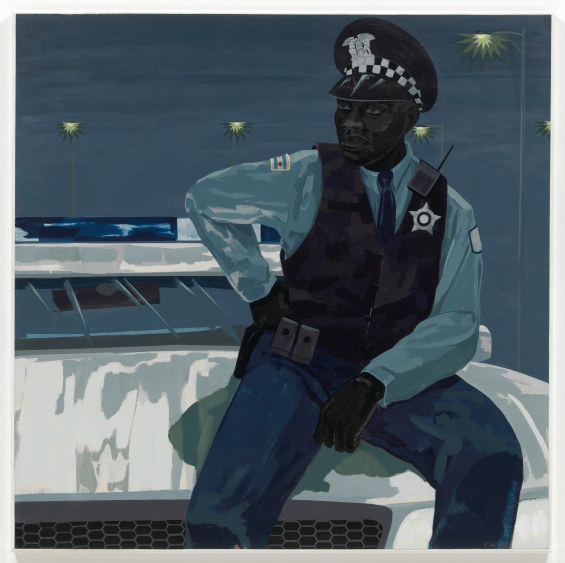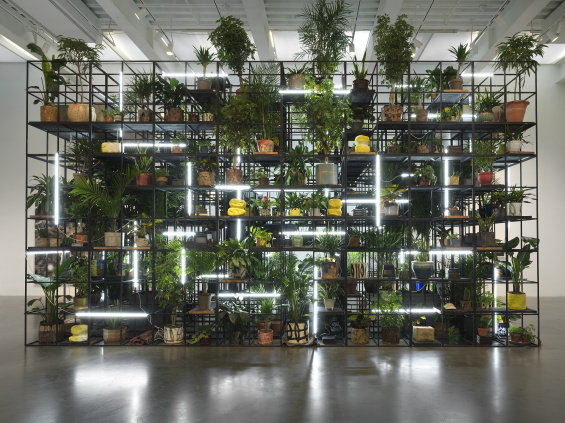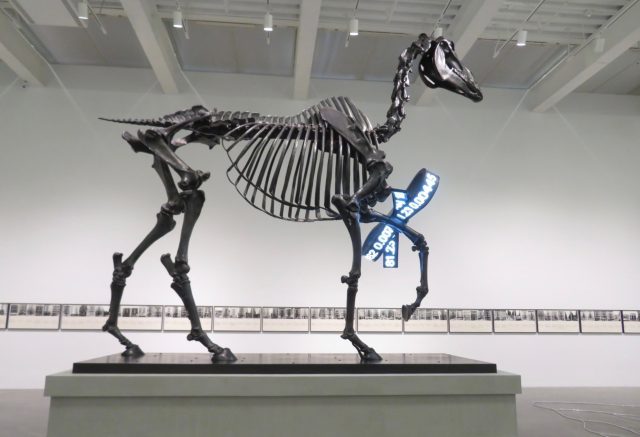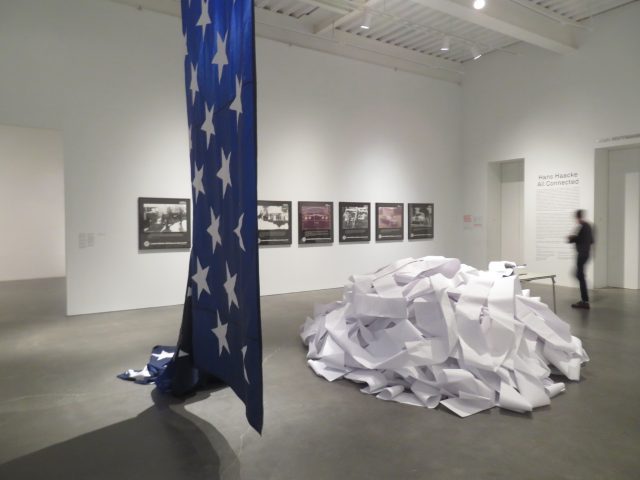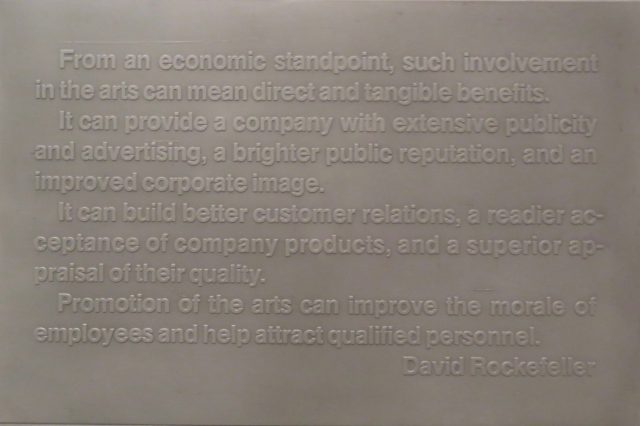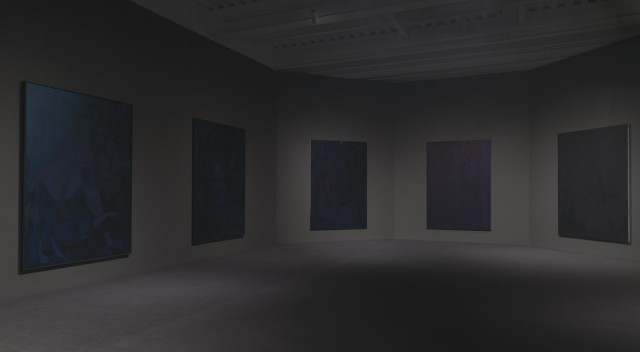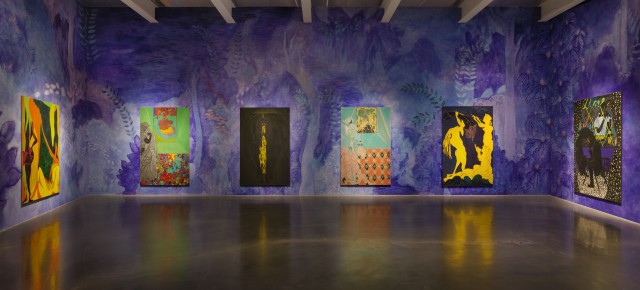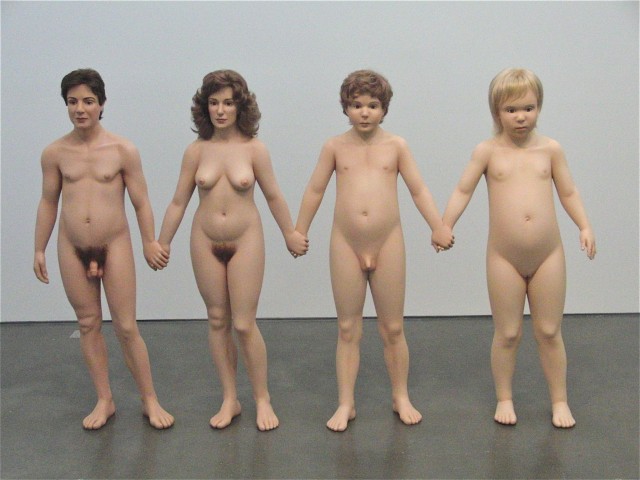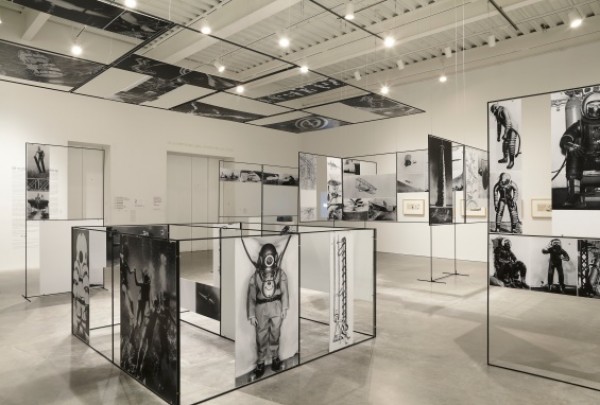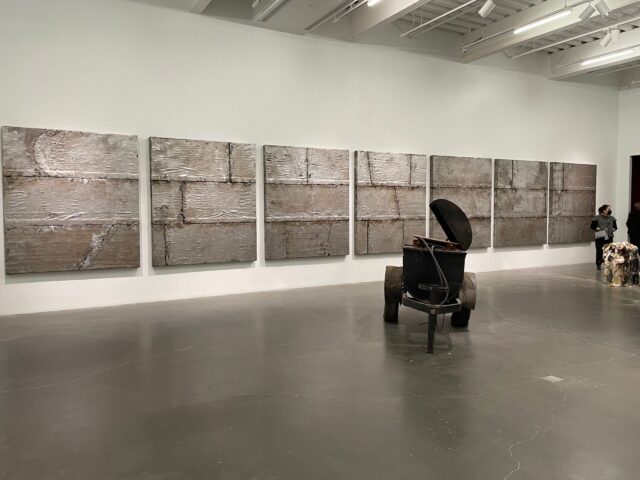
Theaster Gates pays homage to his father and his own childhood in Sweet Chariot and Seven Songs for Black Chapel #1–7 at the New Museum (photo by twi-ny/mdr)
THEASTER GATES: YOUNG LORDS AND THEIR TRACES
New Museum
235 Bowery at Prince St.
Tuesday – Sunday through February 5, $12-$18
www.newmuseum.org
online slideshow
“I make designations between a thing that I made that’s art, a thing I had fabricated that’s art, and a thing that was a preexisting thing that I put alongside other things that were made or fabricated. I don’t necessarily say, ‘Oh, this is all art,’ even though it’s all art, but I think that there are moments when I’m just trying to put things alongside each other like you would in your house or like you would in a shrine,” Chicago-born multidisciplinary artist Theaster Gates says in a video for his elegiac, beautiful, deeply moving “Theaster Gates: Young Lords and Their Traces,” continuing at the New Museum through February 5. “This show is about people who I’ve lost and the things that they left for me, or people who I love and the monument of love that I want to show for them.”
In the three-floor exhibition, curated by Massimiliano Gioni and Gary Carrion-Murayari, Gates pays homage to curator Okwui Enwezor, writer bell hooks, fashion designer Virgil Abloh, scholar Robert Bird, and enslaved potter David Drake (Dave the Potter) as well as his mother (Bathroom Believer), a devout Christian, and his father, a roofer (Roof Strategies for Museum Corridor, Sweet Chariot). Gates repurposes found objects gathered from demolished buildings and construction, including from St. Laurence Church on the South Side of Chicago and Park Avenue Armory in Manhattan, where he hosted “Black Artists Retreat 2019: Sonic Imagination.” Among the highlights of the show are Black Madonna, encased in a vitrine; the short film A Clay Sermon; a music video of Gates and the Black Monks of Mississippi performing an extended improvisational “Amazing Grace”; the fifty-foot-long Roof Strategies for Museum Corridor; and the silver monochrome Seven Songs for Black Chapel, which harkens back to Gates’s childhood.
There are still several special events being held at the New Museum in conjunction with this first-ever museum retrospective of the work of Gates, who turns fifty this year. On January 19 at 6:30 ($10), the panel discussion “Resurrections: Theaster Gates” features curators Jessica Bell Brown and Dieter Roelstraete and LAXART director Hamza Walker, moderated by Carrion-Murayari. On January 21 at noon (free with museum admission), independent archivist and memory worker Zakiya Collier will facilitate an “Out of Bounds” gallery talk about Gates’s archiving practices. On January 21-22 and from January 31 to February 3 (except January 30; free with museum admission), keyboardist and composer Shedrick Mitchell will activate the Hammond B3 organ in A Heavenly Chord, performing his unique mix of Gospel, reggae, R&B, jazz, and new age music. From February 3 to 5, Gates and the Black Monks will play impromptu performances in the fourth-floor gallery. And on February 4 at 4:00 ($8), Gates will be in conversation with writer and scholar Saidiya Hartman. But you needn’t rely on a special event to get you to the New Museum to see this well-designed, uncluttered, intimate exhibit, which also deals with social injustice, racism, and faith.
